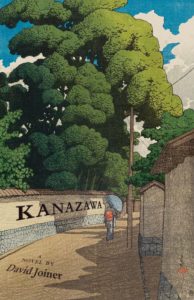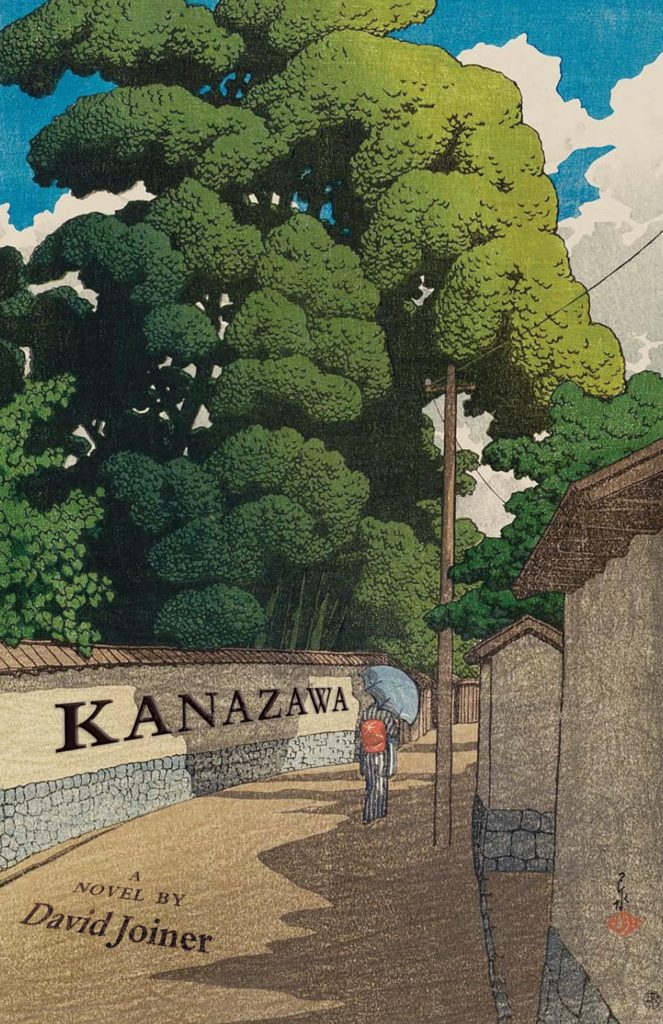Review by Tina deBellegarde
In Kanazawa, David Joiner delivers a slow-burning family drama reminiscent of a film by Yasujirō Ozu or Hirokazu Koreeda. This is a modern tale that, like its protagonist, keeps one foot in the past. It tells the story of Emmitt, an ex-pat, who is seeking a connection with Japan’s history and tradition. He loves the city of Kanazawa with its history and traditions intact, and he dreams of settling into a machiya, a traditional home that represents Japan’s past as well as Emmitt’s idea of his future.
While Emmitt looks to the past, his wife Mirai is more inclined toward Tokyo, where her sister is accomplishing her dreams and where Mirai hopes to recapture her own missed opportunities. For Emmitt, Tokyo represents the opposite of what he seeks. The disparity in their needs and how they seek to resolve it is at the heart of the story.
When we first meet Emmitt and Mirai, they are living an uneventful existence with the protagonist’s in-laws in a not-so-new but modern home. While Emmitt and Mirai are navigating their plans for their future, his in-laws are having a similar marital tug of war over their past. Slowly the older couples’ history bubbles to the surface and needs to be addressed. Climbing Mount Hakusan becomes an imperative for the father-in-law and we come to learn it is connected to his secret. The mountain journey is where the narrative unravels and is the catalyst for the characters to start untangling their problems.
This is a domestic drama about family units, about homes (especially modern versus traditional), and about the cities that house these homes, particularly Kanazawa, Tokyo and Shiramine. Each family member is tackling at least one issue, but each is handling it in their own quiet way. This does not mean there isn’t conflict, but the conflict is muted since all four characters care deeply for one another and are navigating their issues while carefully avoiding hurting others.
At the heart of the story is Emmitt’s search for purpose. He leaves his teaching job without lining up another position so he can find his way. When asked how he feels about the risk he has taken, he responds, “I want to branch out into something new, where I can test myself in a way I never have before. I don’t mean just a new livelihood, which is part of it, but a new way of living. … Everyone needs a sense of purpose. I had none until I quit. Risking that was no risk at all.” (pp161-162)
He finds his way via Izumi Kyōka’s literature and Kyōka’s city of Kanazawa, both of which have the power to stir within him a longing for the past. Kyōka (1873-1939) had an aversion to contemporary society of his time and Emmitt also looks to the past for meaning and purpose.
Joiner adds a layer of reading pleasure by intertwining key aspects of Kyōka’s works into his own narrative. Even I, who was only able to access a couple of Kyōka’s stories, could enjoy the homage.
Emmitt commits to the challenging project of translating Kyōka and discovers an unexpected sense of fulfillment. “The idea that writing could be sacred made Emmitt approach translating with a deeper sense of purpose. More importantly, working with Kyōka’s writing helped Emmitt feel he was evoking the past, even keeping it alive. And in doing this he realized he was finding a place for himself.” (p184) I see this reflected in Joiner’s writing as well, where he treats language as sacred and uses it with delicacy and respect.
Emmitt is trying to absorb the culture, history and literary legacy of Kanazawa. He has the benefit of the eyes of an outsider. The Japanese culture is fascinating, beautiful and long, and for a non-native, the possibilities of investigation are endless. For a life-long learner such as Emmitt, this is ideal. In the end, Emmitt concludes that he finally discovered where he stands in relation to the past. This is what he had been seeking.
Kanazawa is a gentle tale. It is not chaotic and swelling with noise or action. Each scene is quietly painted and, even in distress, holds some comfort. There is no big conflict upon which the story turns, rather, there are a series of important decisions with consequences and after each one, the characters reshuffle and readjust to the new normal. The Japanese narrative structure of Kishōtenketsu is easily recognized here by the subtle shifts and the slow evolution rather than a destructive conflict.
This book is a reminder that there is meaning in our day to day existence. Literature of this sort encourages us to see the beauty of our mundane lives and to embrace our daily routines. Alex Kerr refers to Kanazawa as a “graceful novel of a graceful city” and indeed, it is just that.
Joiner has expressed his hopes that Kyōka’s readership spreads, that his work will not disappear. I for one, have had my interest piqued. I intend to visit Kanazawa and Shiramine. I want to read more Kyōka. And isn’t that what any author wants? To have readers think, and learn and investigate as a result of their art?


